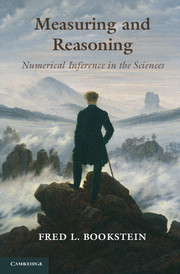Part III - Numerical Inference for General Systems
Published online by Cambridge University Press: 05 March 2014
Summary
Make everything as simple as possible, but not simpler.
– Albert Einstein (attrib.)Introduction to Part III
Part III is more technical than parts I and II, but the change of rhetoric is unavoidable. As in earlier books of the tradition within which I'm working (Jeffreys's Theory of Probability of 1939, Jaynes's Probability Theory of 2003), the argument is that certain procedures based on arithmetic lead to valid reasons for believing in some scientific explanations – that some arithmetically based inferences about true states of the world should be thought of as reasonable, as rational. When the scientific assertions are complex, as they will be in most of the examples in this part of the book, so are the arguments that defend the rationality of the arithmetic applied there. In particular, the mathematical language of the patterns that arguments like these invoke – patterns like singular vectors, random walks, or distributions in shape space – is not part of everyday spatial metaphors, everyday conversation and gesture, or everyday persuasion, the way it was in Chapter 4.
Just as scientists need reasons for asserting that new evidence is consilient with a particular explanation, so they need reasons for asserting that a finding is indeed surprising on other explanations. When data are numerical, so, usually, are these reasons – extremeness or other unique characteristics of particular statistical descriptions or geometrical patterns.
- Type
- Chapter
- Information
- Measuring and ReasoningNumerical Inference in the Sciences, pp. 289 - 290Publisher: Cambridge University PressPrint publication year: 2014



